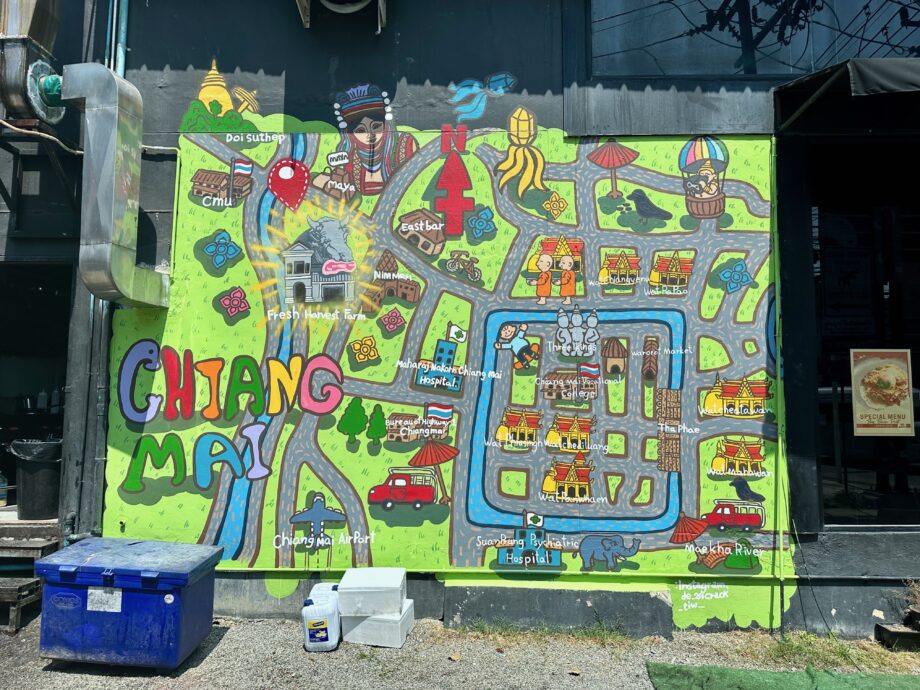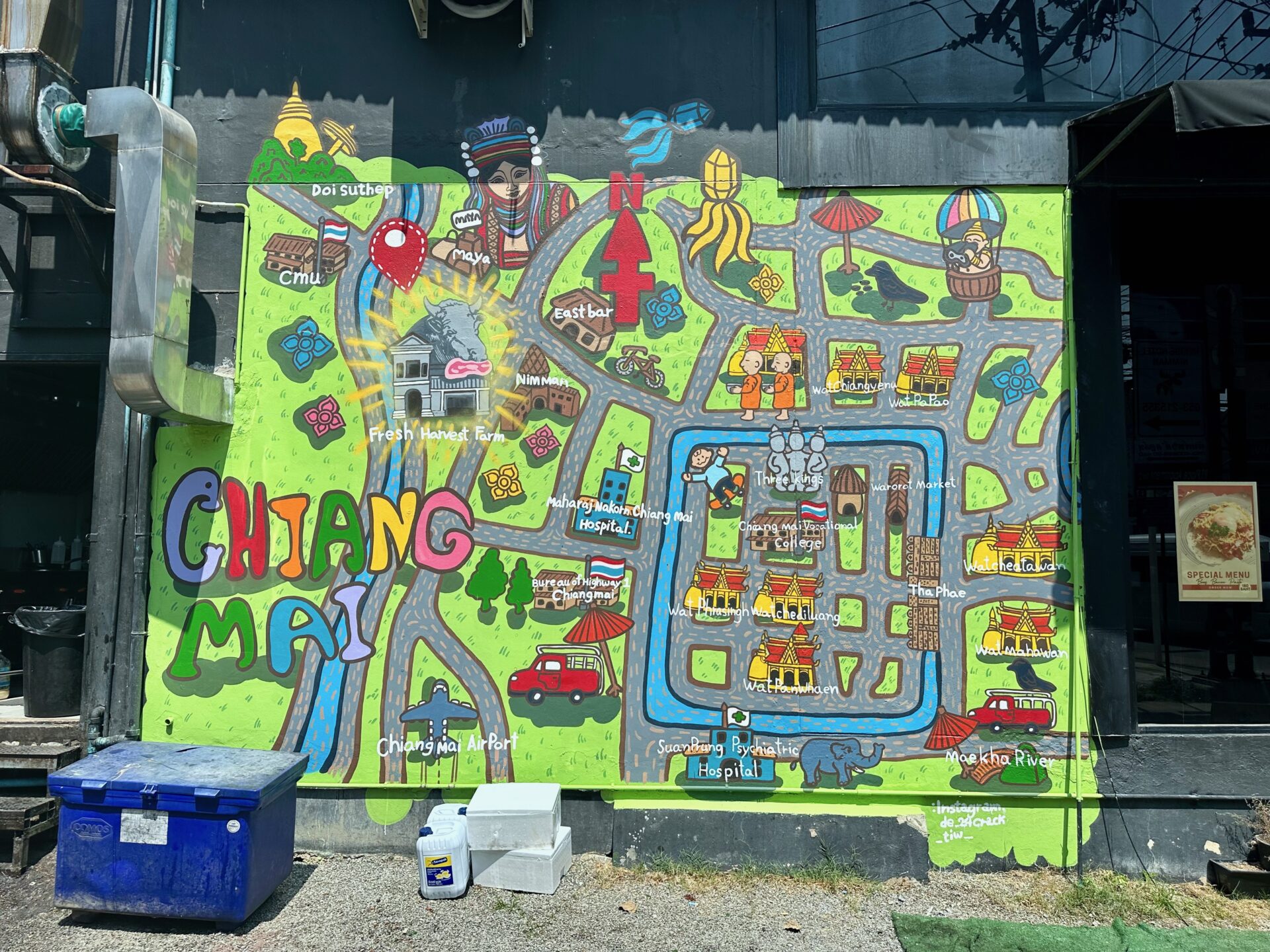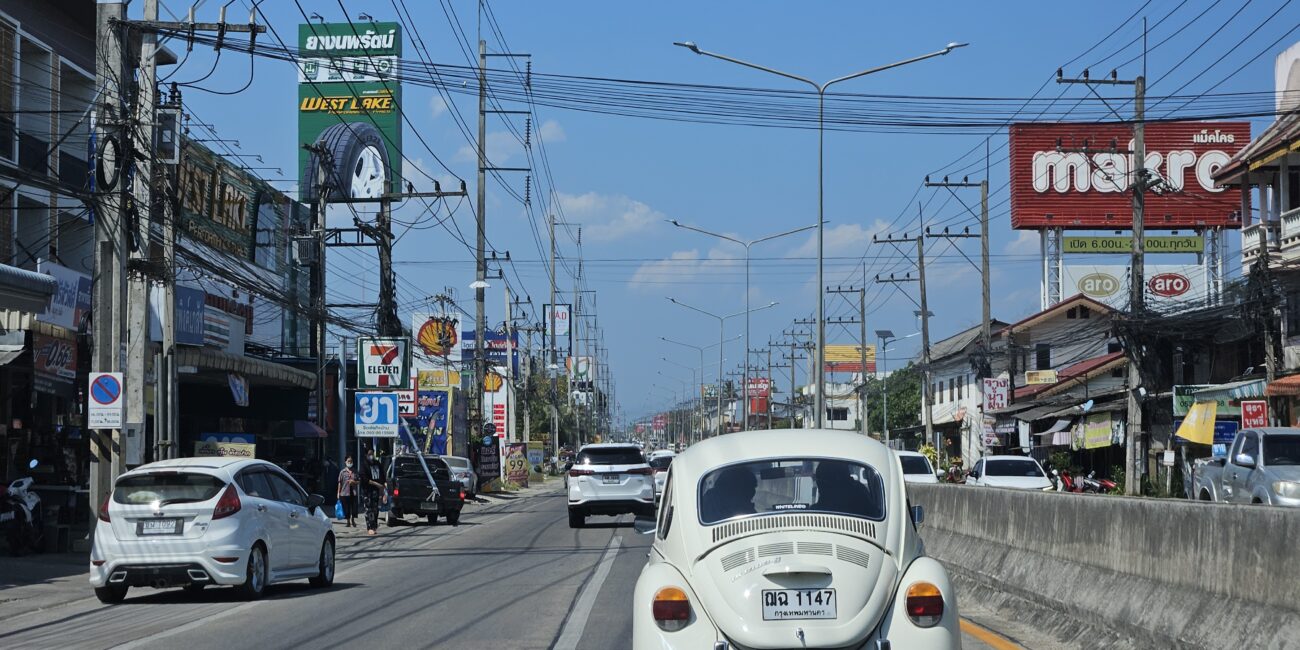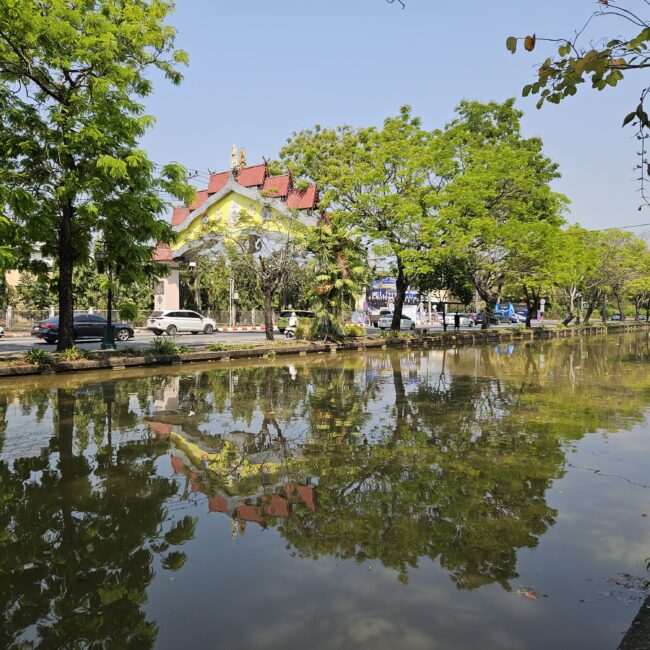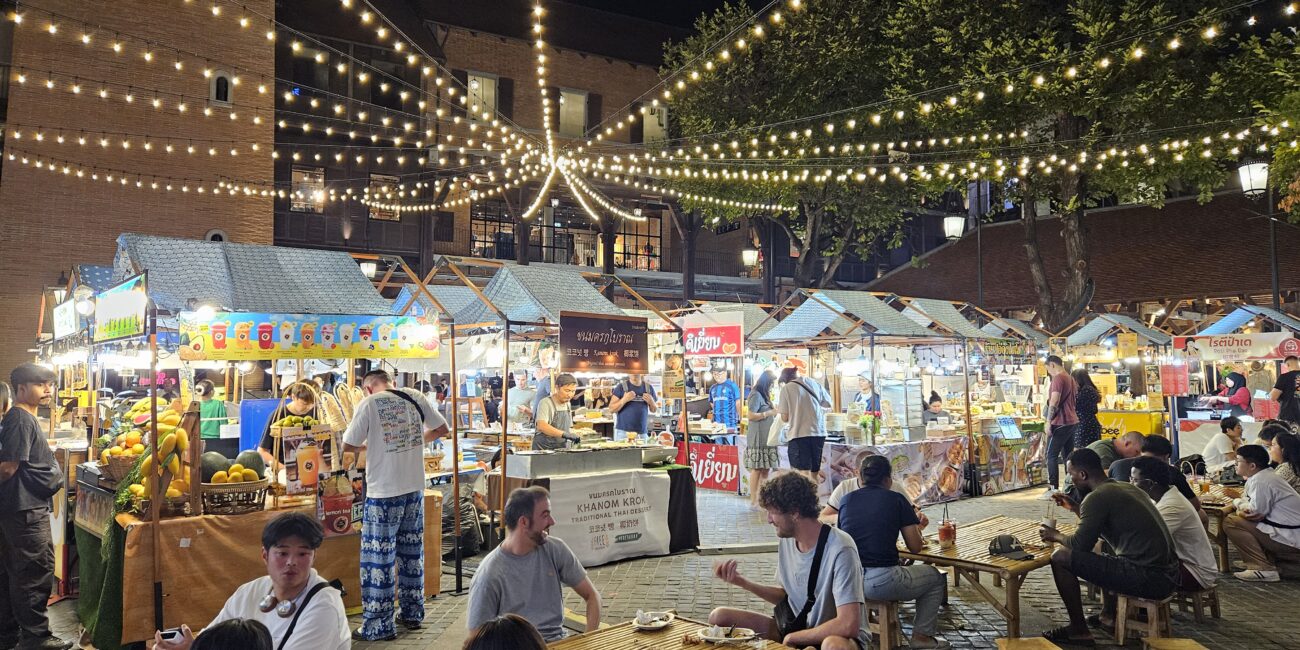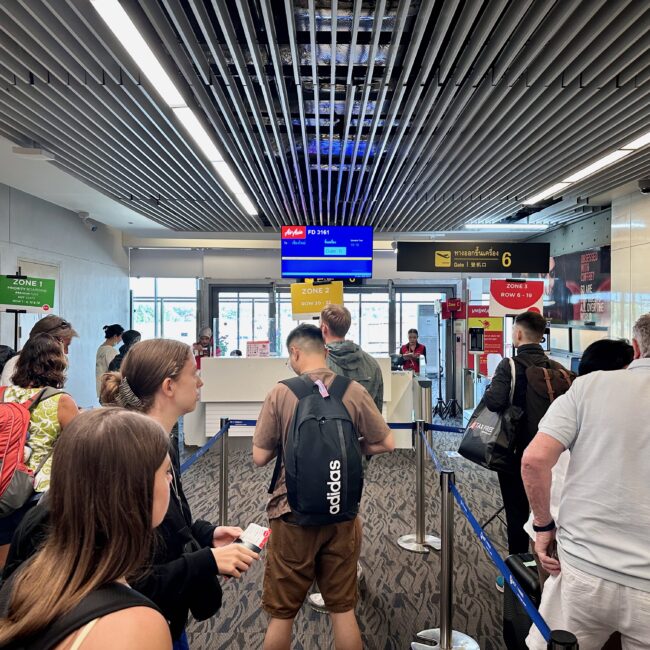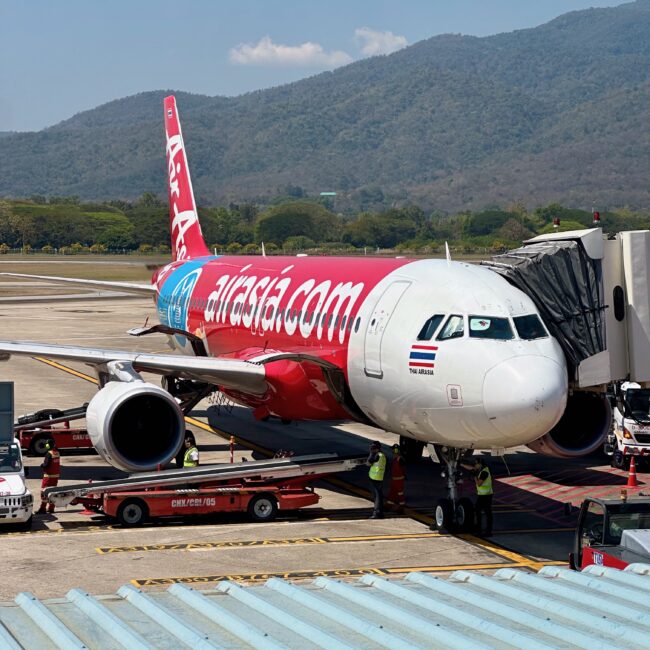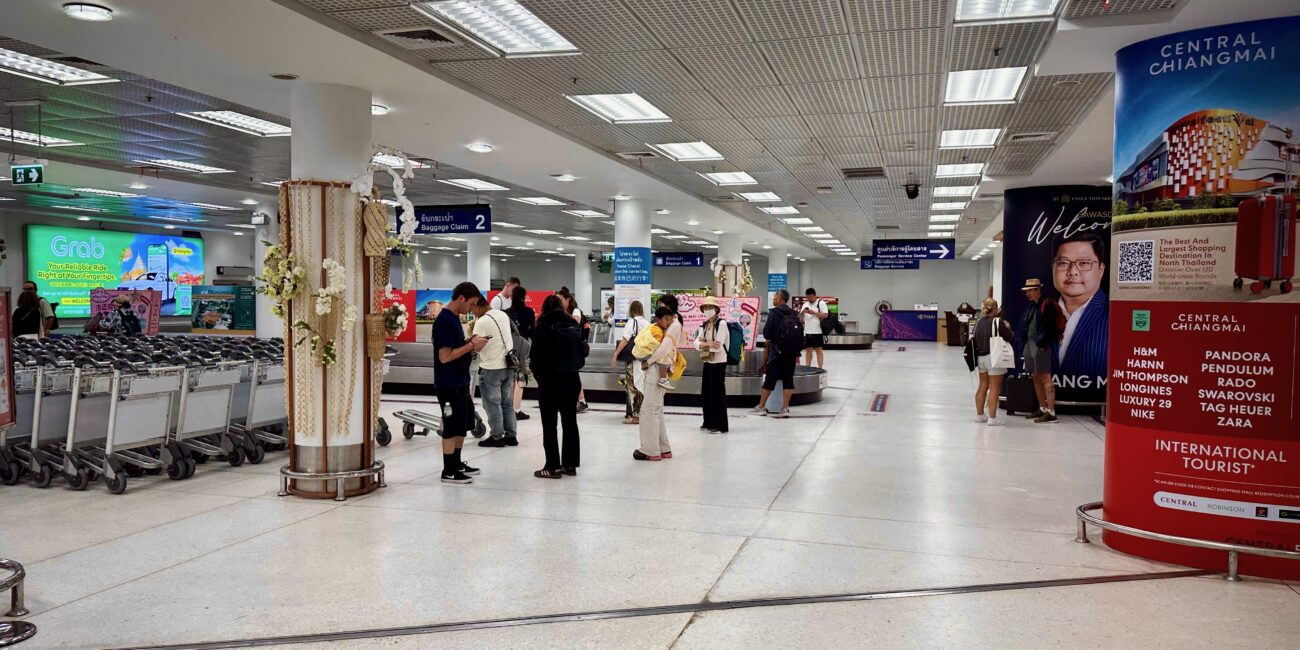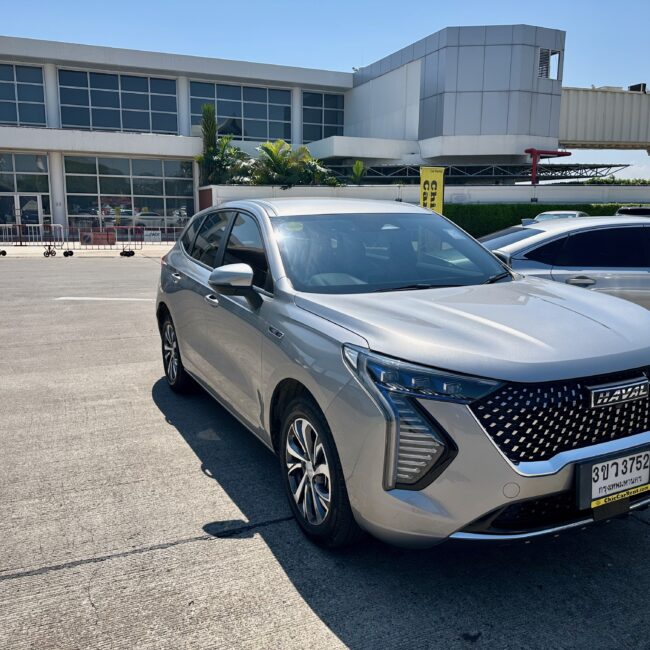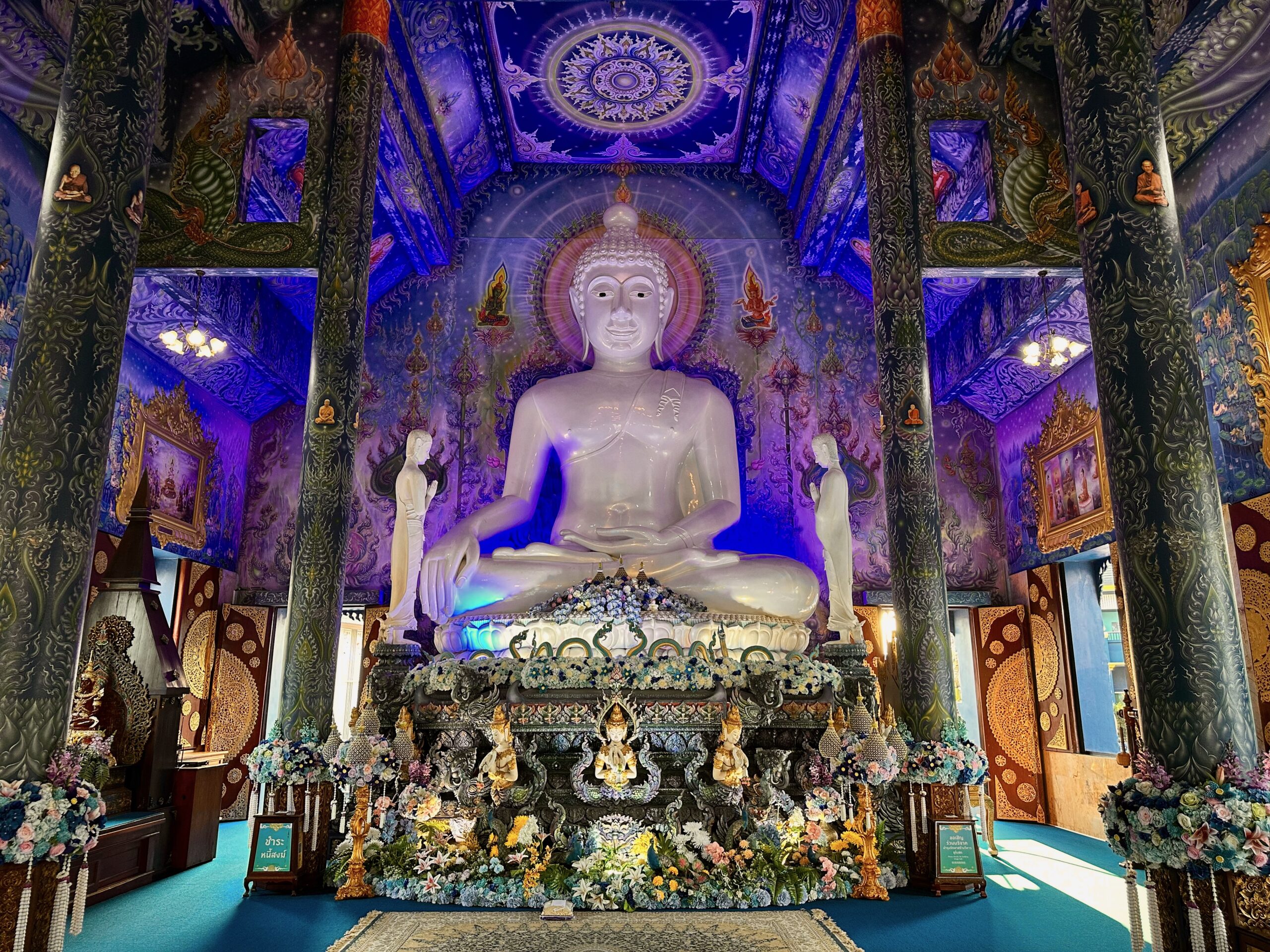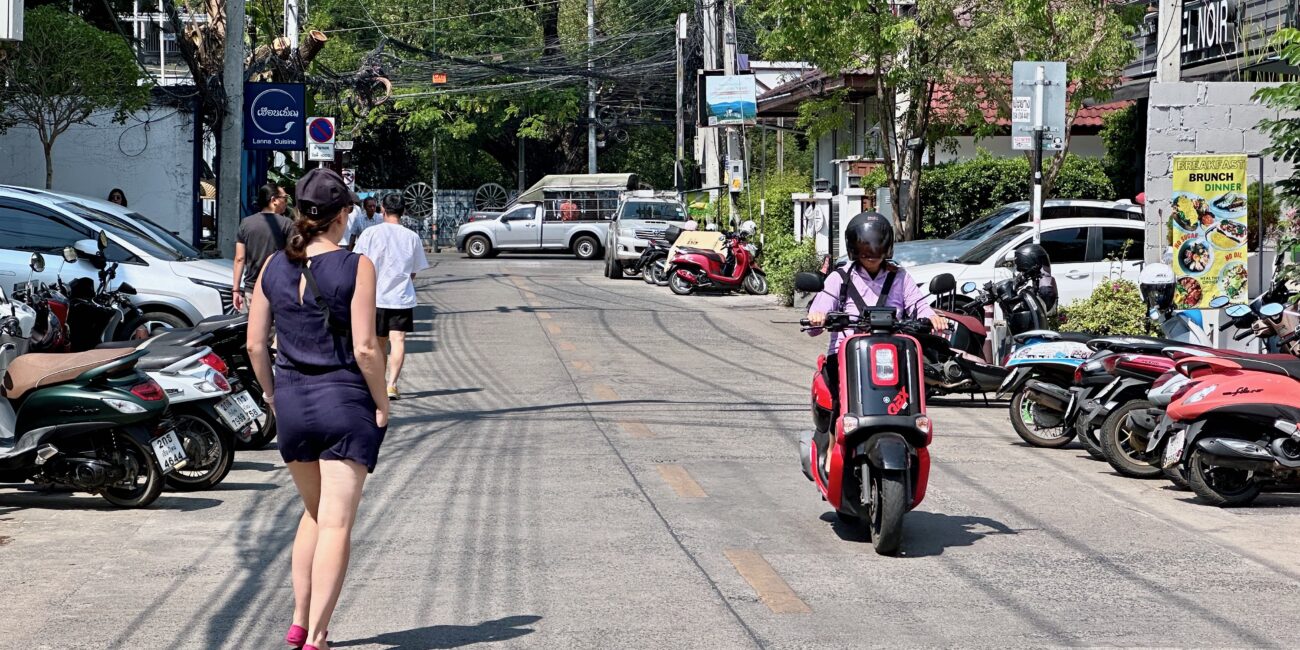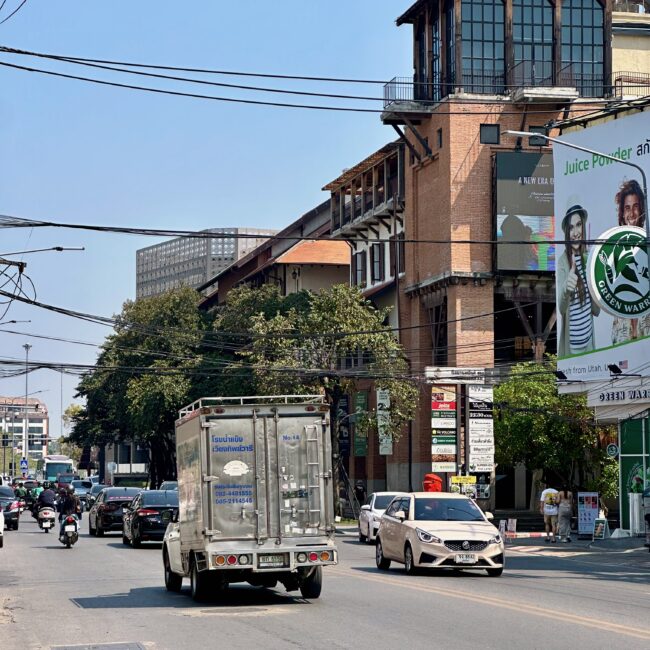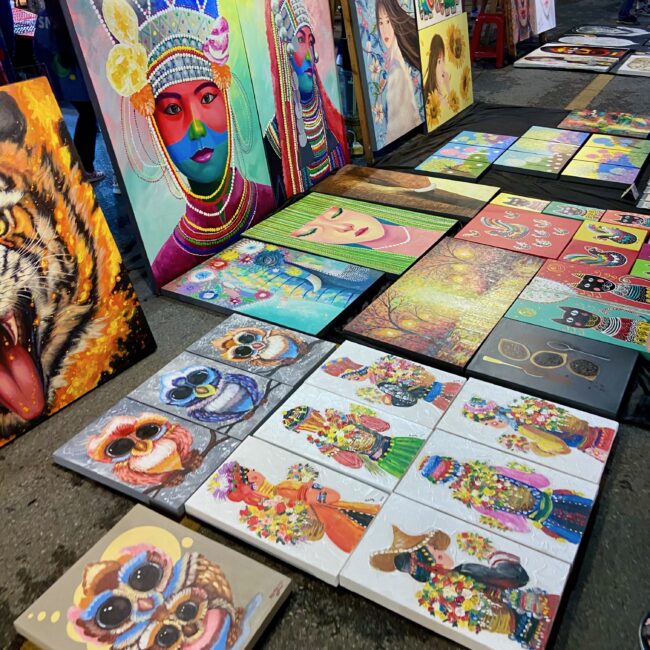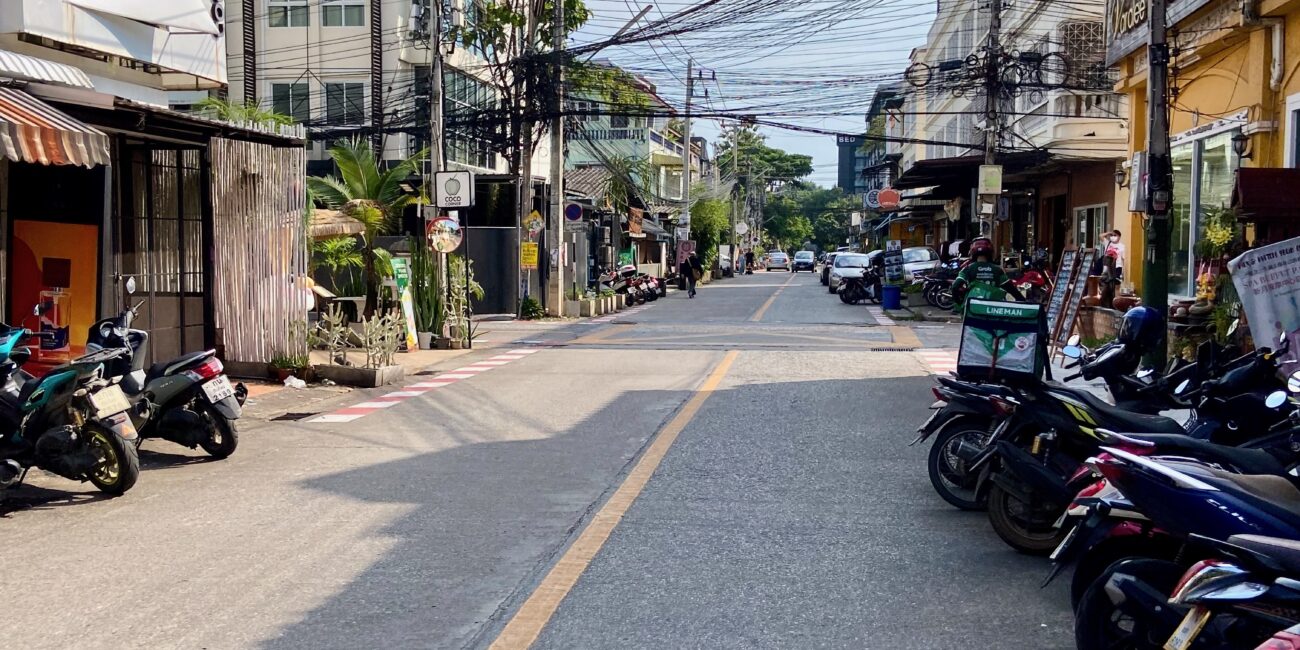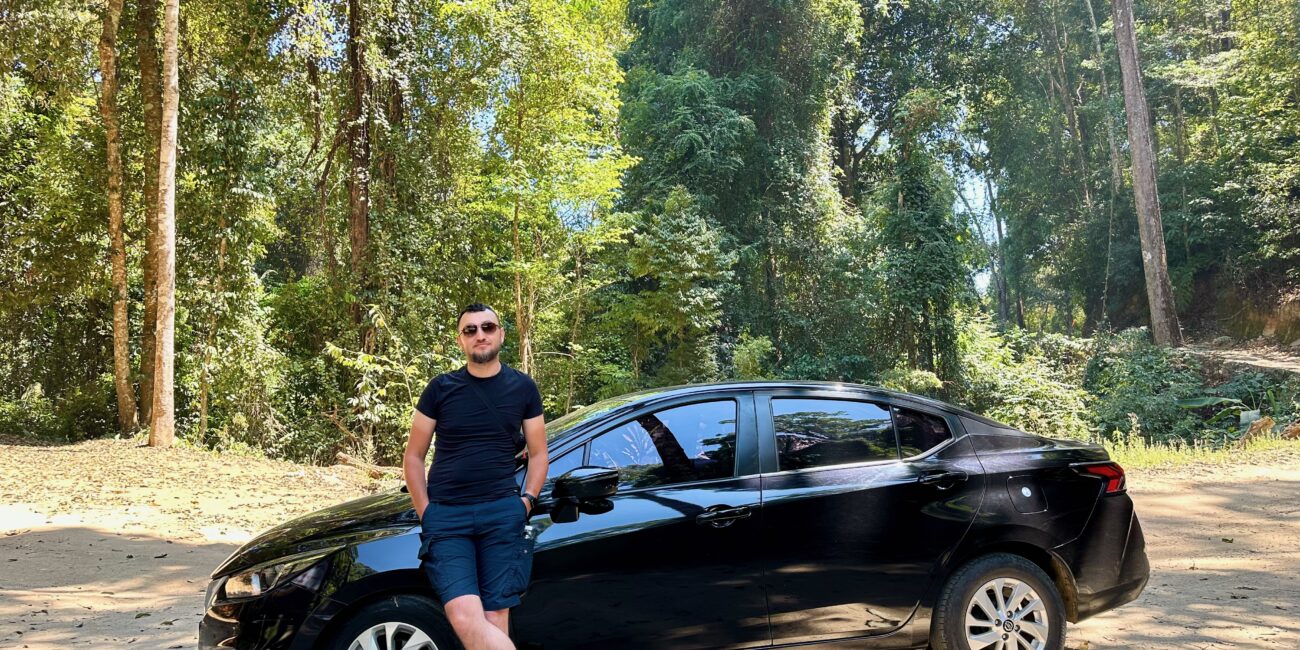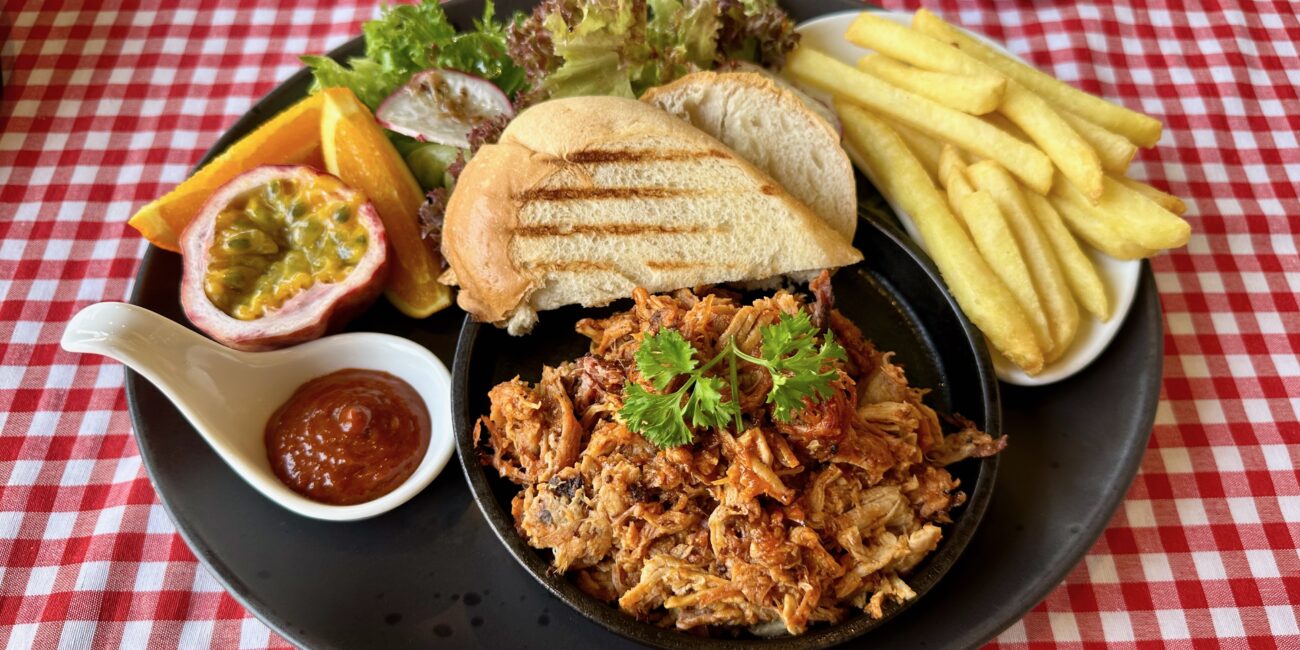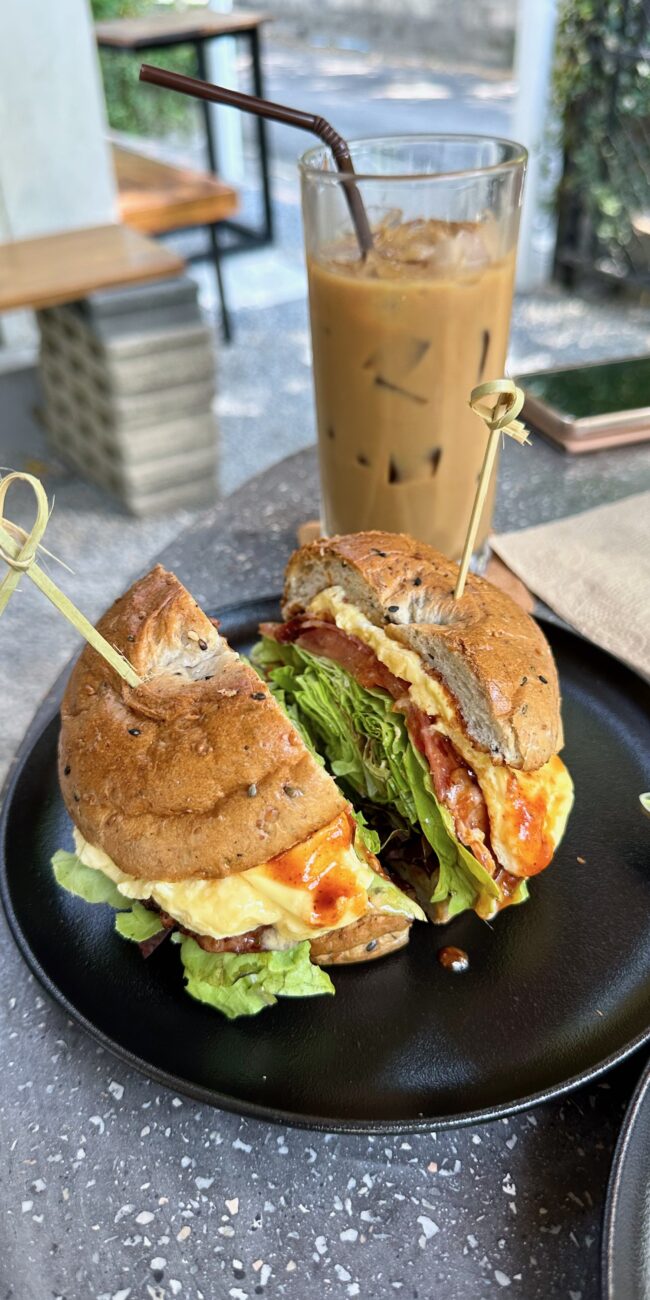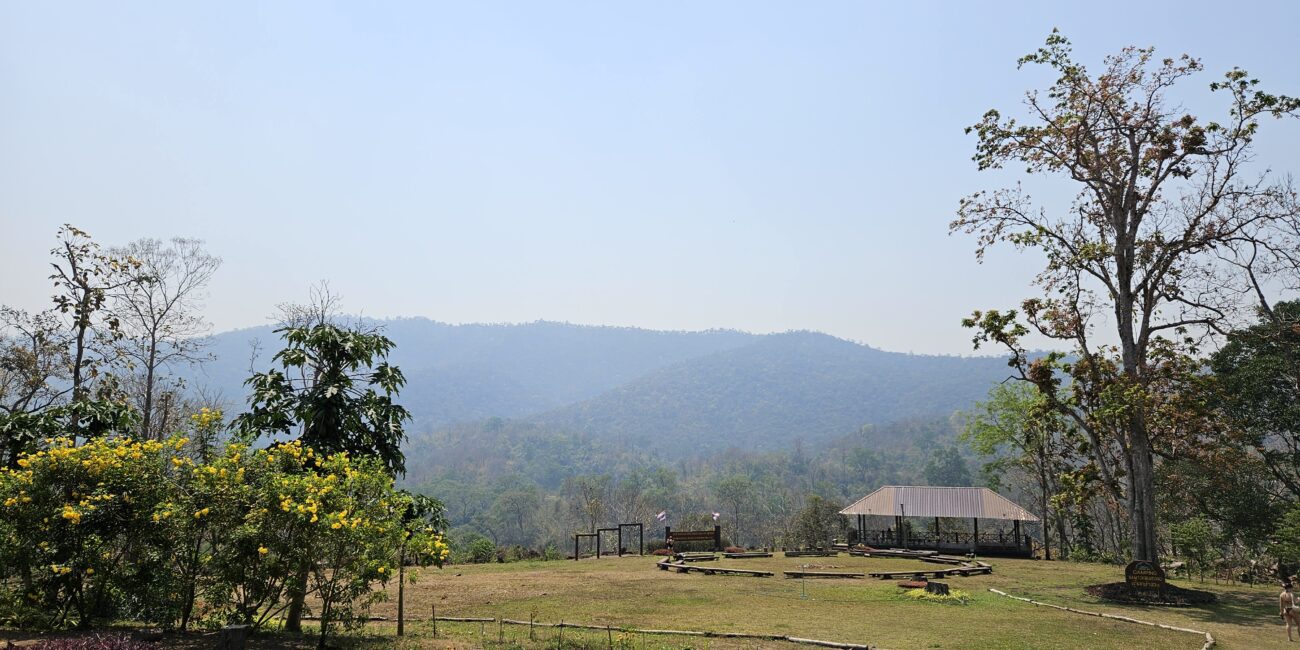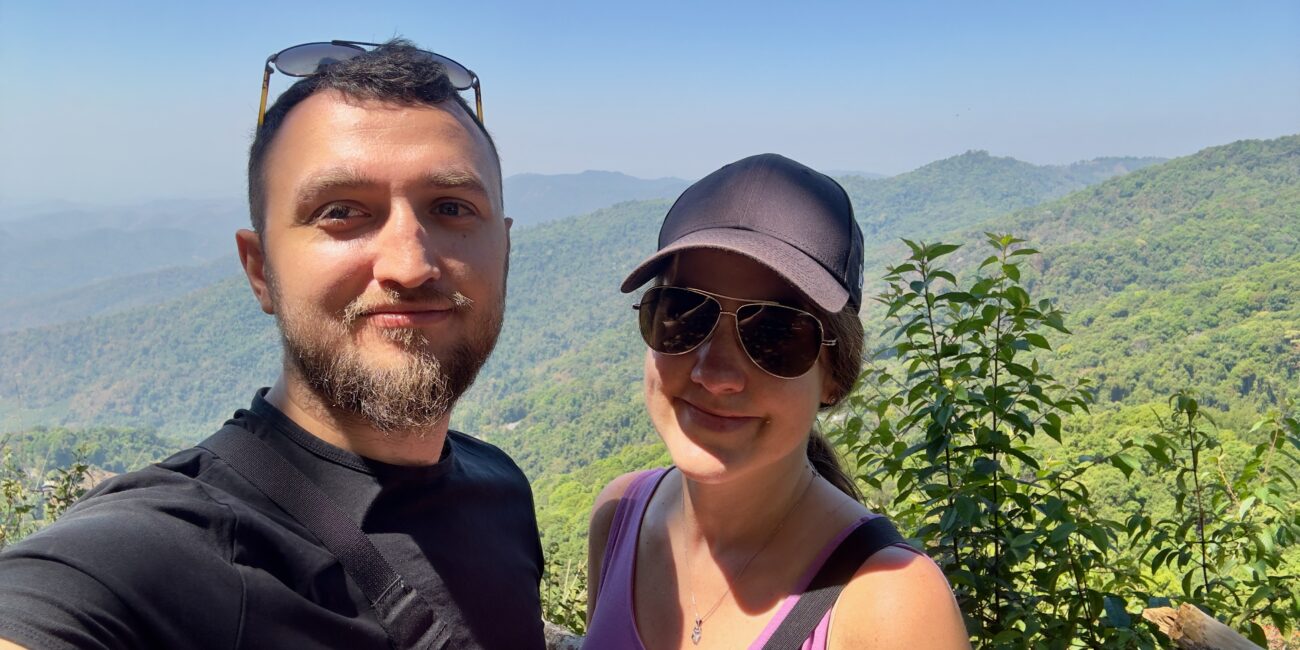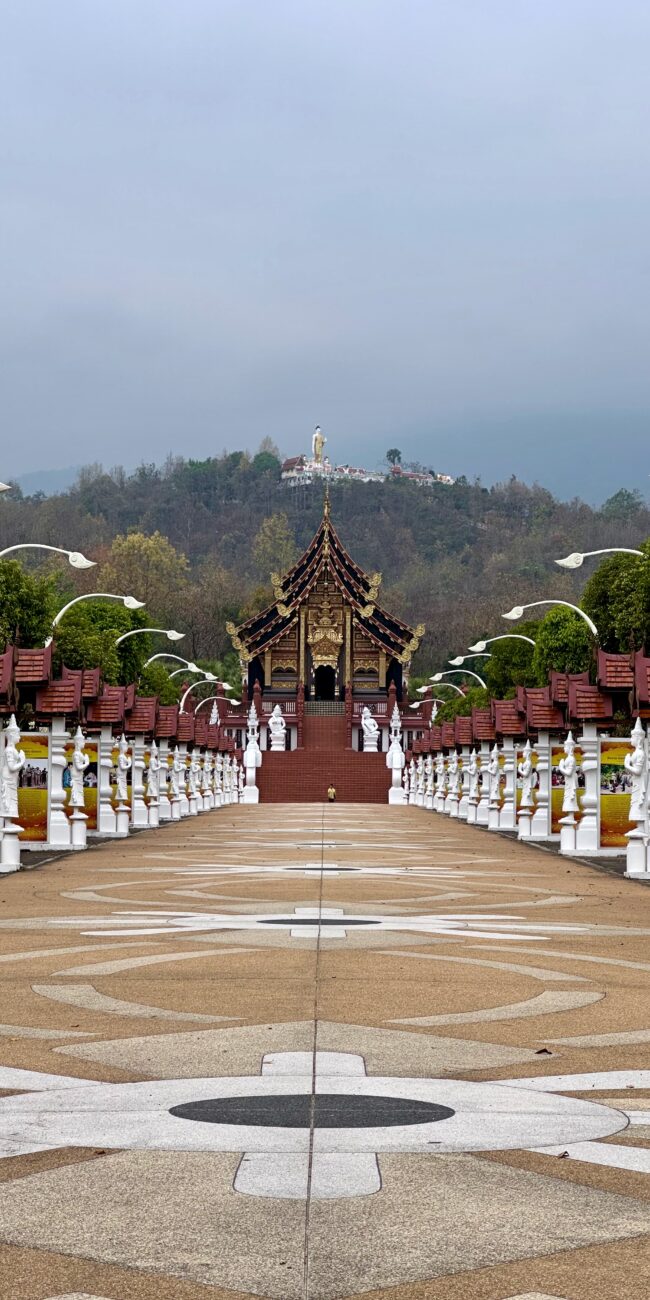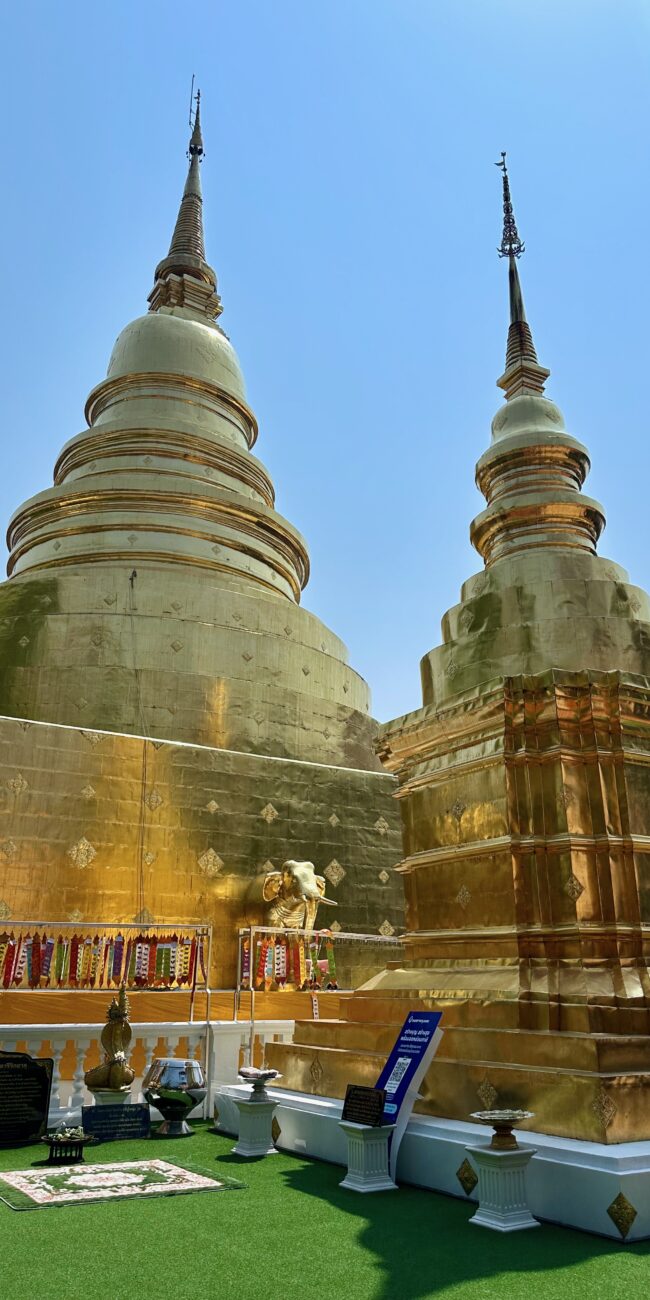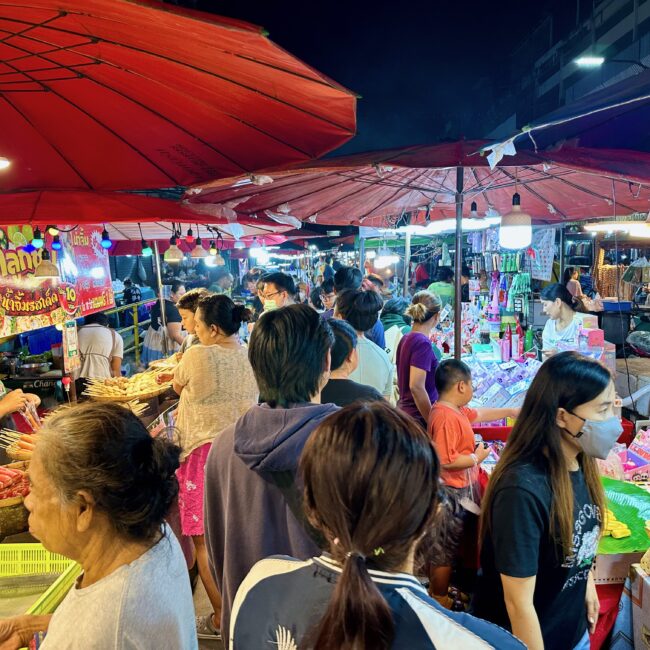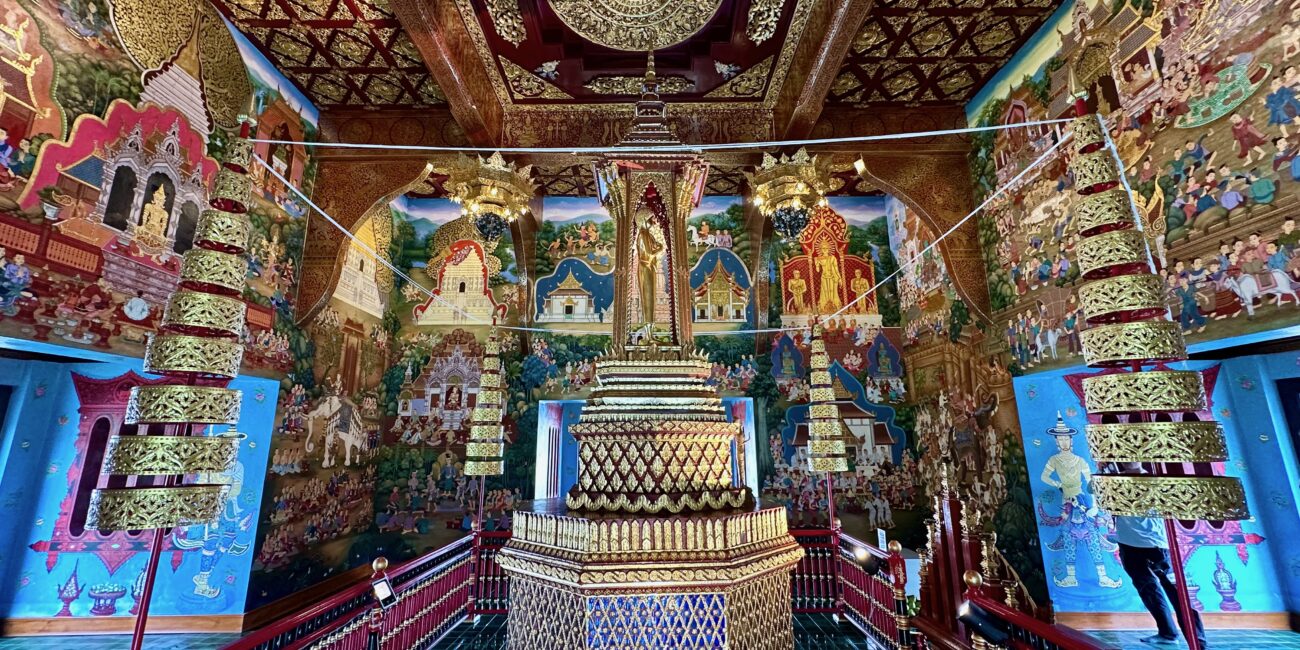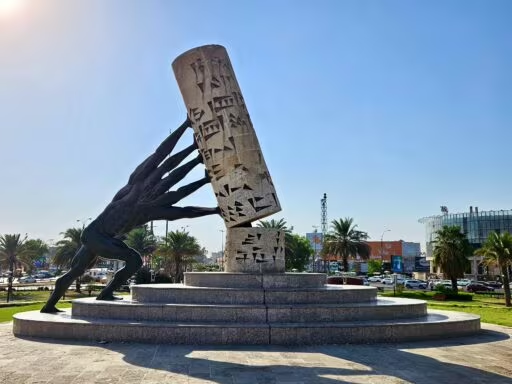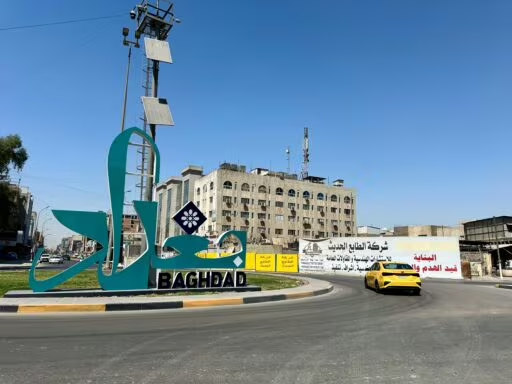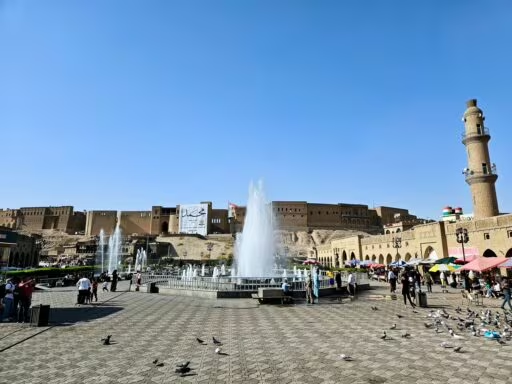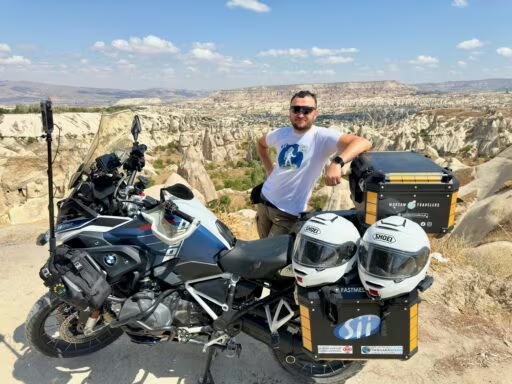This post is also available in:
Polski
Hello! 👋
After a week and a half on Phuket, it was time to move on. Our next stop: Chiang Mai – a city I had already visited back in 2022, not long after the whole post-COVID mess. Back then, it felt like a different world – empty streets, closed-up cafes, and tourism only just starting to wake up. But this time, I was coming back with Jadzia, ready to show her what this part of Thailand has to offer.
Is Chiang Mai really the digital nomad hotspot everyone says it is? How has the city changed since the pandemic? And most importantly – did we actually like it here? That’s exactly what we’re diving into in today’s post!
Where is Chiang Mai located?
Chiang Mai is located in northern Thailand, about 700 km north of Bangkok. It’s the second-largest city in the country, but vibe-wise, it couldn’t be more different from the capital. Sitting at around 310 meters above sea level in the Ping River valley, surrounded by mountains and lush greenery, the city has been an important stop on Southeast Asia’s trade routes for centuries.
Founded in 1296 by King Mangrai as the capital of the Lanna Kingdom, Chiang Mai has preserved plenty of traces of its past – from remnants of old city walls to countless temples that give the city its unique character. Today, it’s a place where tradition blends with modern life: ancient landmarks sit alongside trendy cafés, coworking spaces, and buzzing night markets.
Even though it’s a fairly big city, life in Chiang Mai flows at a much more relaxed pace than in Bangkok. That laid-back vibe is exactly what draws both tourists and digital nomads – people who appreciate the solid infrastructure, budget-friendly prices, and great conditions for remote work. It’s also the perfect base for exploring northern Thailand, whether you’re into mountain treks around Doi Inthanon or curious about visiting picturesque villages home to local hill tribes.
Leaving Phuket for Chiang Mai
Our Thailand trip kicked off with an Air China flight connecting through Chengdu to Phuket, and we’ve already shared stories from those earlier legs of the journey. If you’re curious about our first impressions, check out our posts about the 🇨🇳 stopover in Chengdu and 🇹🇭 our time on Phuket, where we spent a week and a half before heading north.
Airport
There aren’t that many direct flights from Phuket to Chiang Mai, which is a bit surprising considering how popular both destinations are. You’d think the national carrier would have some convenient options, but in reality, the choices are pretty limited. For the time slot we wanted, the only option was AirAsia – I think VietJetAir also had a flight that day, but it was scheduled a bit later.
Since it was a domestic flight, we didn’t have to go through passport control – just a quick baggage drop, standard security check, and we were good to go. I’d been through Phuket airport back during the pandemic, and the difference is pretty striking. This time, the waiting area was packed with passengers, but despite the crowd, check-in and security went smoothly.
A quick tip: bring a sweatshirt or something warm on board. AirAsia flights can get seriously chilly thanks to the overachieving air conditioning. With over 30°C outside and what feels like a fridge inside, the temperature contrast is real – and it’s an easy way to catch a cold if you’re not prepared.
Arrival in CNX
We landed in Chiang Mai right on schedule, with no delays. The flight took about two hours, and somewhere in the middle of it we managed to doze off for a bit. It’s AirAsia, so as expected – a bit cramped, and ads everywhere. Seriously, one more sticker and they’d be plastering them on the seat fabric too.
Baggage claim went smoothly, and thankfully, everything arrived in one piece. Still, it’s worth keeping in mind that even on domestic flights, your luggage isn’t always handled gently. If something’s off – a busted wheel or a cracked shell – it’s best to report it right there at the belt. Once you walk away from the claim area, filing a complaint can become close to impossible.
Chiang Rai for the weekend
Our travel plans were originally a bit different, but on a whim we decided to squeeze in a weekend trip to Chiang Rai. I wanted to show Jadzia a few spots in the region that I thought were worth the drive, so we rented a slightly bigger car to make the ride more comfortable.
Even with a tight schedule, we managed to see almost everything I mentioned in a separate post about places worth visiting in Chiang Rai. If you’re planning a trip there, definitely give it a read! And if we had to name our top must-sees? The White Temple (Wat Rong Khun) and the Blue Temple (Wat Rong Suea Ten) are absolutely unmissable – no question about it.
Visas and documents
Getting into Thailand as a Polish citizen is pretty straightforward – for stays up to 60 days, there’s no need to arrange a visa in advance. Just show your passport, get a stamp at the airport, and you’re good to go. That’s exactly how it was for us, both in Phuket and now in Chiang Mai – smooth and hassle-free.
One interesting update worth mentioning is Thailand’s new visa option for digital nomads. It allows you to legally live and work remotely in the country for an extended period of time. Definitely a solid option if you’re planning to stay for a few months, rather than juggling tourist visas and constant renewals.
If you’re looking for more details about this or any other type of visa, it’s best to check the official Thai government website. That’s the only place where you’ll find up-to-date info and where you can actually submit your application.
Accommodation
Back in 2022, I stayed in the Old City – the historic heart of Chiang Mai, surrounded by remnants of ancient walls and a moat. It’s the city’s tourist hub, packed with temples, cafés, and hostels. But this time, traveling with Jadzia, we decided to stay somewhere different: Nimmanhaemin.
Nimmanhaemin – or just Nimman, as most people call it – is a modern part of Chiang Mai that’s become a favorite among expats and digital nomads. It’s packed with trendy cafés, coworking spaces, and a good mix of international restaurants. The area’s well connected and has a totally different vibe from the Old City – fewer temples, more sleek buildings and boutique hotels. Definitely more “laptop and latte” than “temple and tuk-tuk”.
We rented an apartment in Nimman for a week. Nothing fancy – just an average place that could really use a bit of renovation. The bathroom silicone was pretty grimy, the furniture had definitely seen better days, but hey – at least we had parking included for both the car and scooter. If you’re planning to work remotely, it’s worth double-checking the internet situation. In our case, it was running on an old phone line, and download speeds rarely went above 40 Mbps. Fine for browsing and watching YouTube, but if you’re working over VPN like we were – expect some struggles.
The weekly rent came out to around 850 PLN, which is a pretty fair price for this part of Chiang Mai. If only the apartment had been in slightly better shape, it could’ve been a really solid stay.
Traffic conditions
Traffic in Chiang Mai feels a bit different compared to Phuket. While scooters ruled the roads down south, here it seems like there are more cars, which gives the traffic a slightly different flow. That said, it’s still Thailand – so the usual dose of chaos applies. Lane changes without signaling? Check. Right-of-way being more of a suggestion than a rule? Absolutely. You just sort of learn to go with the flow.
Officially, the speed limit is 60 km/h in cities, 90 km/h outside urban areas, and up to 110 km/h on highways. In reality though, hardly anyone sticks to that – lots of drivers push the limits, especially on wider roads and major routes. It’s just one of those things you get used to when driving in Thailand.
A few things to look out for:
- Helmets are technically mandatory for all scooter riders – emphasis on technically. Locals often ride without them, but if you’re a tourist, don’t count on getting the same free pass. The police are known to stop foreigners and hand out fines, which can go up to 2,000 THB.
- In the car, it is necessary to wear seat belts, including in the back seat.
- Children under 6 are supposed to ride in car seats – that’s the official rule. In practice though, let’s just say we saw quite a few… creative local interpretations of that.
- The police in Chiang Mai do enjoy stopping tourists, especially those on scooters. It’s a good idea to carry an international driver’s license with an A category – just having a B category (even if you can ride a scooter back home) can still land you a fine.
The main roads in Chiang Mai are generally in good shape, but once you turn into smaller side streets, it’s a different story – potholes, uneven surfaces, and the occasional surprise bump. On the outskirts of the city and up in the mountains, roads can get narrow and super twisty, so you’ll want to stay alert, especially after dark.
Car rental
Whether it was back in 2022 or now – we always pick up the car straight from the airport. It’s just easier that way. We pretty much always go through Economy Car Rentals, so the car’s ready right after we land. No need to hunt down an office somewhere in the city or wait around for a shuttle. Just grab the keys and hit the road.
If anyone is planning to rent a car in Thailand, there are a few things you should know:
- Going abroad? Forget it. Most rental companies won’t let you take the car outside of Thailand, so if you were hoping to drive over to Laos – yeah, that’s not gonna happen with a standard rental. Better to plan cross-border trips in some other way.
- As for documents, the usual deal is a credit card and an international driver’s license with category B. The police do run checks from time to time, so it’s best to have everything on you just in case – saves you unnecessary stress.
- When it comes to the condition of the cars – if you’re going for a budget option, don’t be surprised if it comes with a few dents and scratches. That’s just part of the deal. SUVs and higher-end models are usually in better shape, but in those cases, rental companies tend to be more particular about inspecting for damage before and after.
And then there’s the whole deposit situation – most rental companies in Thailand understand that the roads aren’t perfect, so if a rock kicks up and chips your hood, nobody’s freaking out. But if you happen to end up with a rental company that suddenly starts nitpicking every tiny scratch just to hold onto your deposit, it’s a good idea to have extra insurance that covers the deposit. Trust us – it’s peace of mind well worth having.
Renting a scooter
Chiang Mai is full of scooter rental shops – from tiny 110cc models to bigger machines with a bit more power for those who want something beefier. There’s plenty to choose from, but before you commit to any specific place, it’s a good idea to read some reviews. Not every rental shop is trustworthy, and some might try to hand you a beat-up scooter or suddenly “discover” mystery scratches when you return it. Better safe than sorry.
What to look for before renting?
- Before you grab the keys, take a good look at the scooter. Snap photos of every scratch, dent, or worn-out part – it’ll save you from awkward arguments later. Also make sure the brakes actually work and the lights turn on. The condition of scooters can vary a lot, and you really don’t want to find that out the hard way halfway through your ride.
- When it comes to paperwork, you’ll need an international driver’s license with category A to legally ride a scooter in Thailand. A category B license isn’t enough – even if some rental shops “look the other way”. That might work until your first police check. A fine is one thing, but if you get into an accident and don’t have the proper license, your insurance likely won’t cover a thing. Not worth the risk.
- Never leave your passport as collateral – seriously, just don’t. If a rental place insists on holding it, it’s better to walk away and find somewhere else, or offer a cash deposit instead. Handing over your most important travel document is a risk you don’t want to take.
Driving in Chiang Mai – is it more difficult than in Phuket?
Unlike Phuket, where scooters absolutely dominate the roads, Chiang Mai has a noticeably higher number of cars in the mix. The traffic’s still chaotic, though – and local drivers tend to treat traffic rules more like friendly suggestions than actual laws.
Don’t forget – Thailand drives on the left side of the road. If you’ve never ridden a scooter in a country with left-hand traffic, those first few moments can be a bit disorienting. It’s a good idea to start out on quieter side streets before diving into busier roads – give yourself a bit of time to adjust.
SIM card
Just like we mentioned in the Phuket part of our trip, we’d seen tons of YouTube and TikTok videos before leaving where people were picking up local SIM cards at 7-Eleven for 199 baht. But turns out, those deals are now only available to people with a Thai ID – so tourists can’t actually buy them. If you’re only reading this part of our journey now and hadn’t come across that info earlier – save yourself the time and don’t bother hunting for those SIMs in stores. It’s a dead end.
The best option? eSIM – no doubt. It lets you get online the moment you land, without having to run around the airport looking for a SIM card. Agoda eSIM is a great place to find solid deals on data plans, but keep in mind: their links sometimes only work if you’re already in Asia, so it might not be something you can sort out before your trip. Still, once you’re on the ground, it’s super convenient and usually much cheaper than airport prices.
For those who prefer to have everything sorted before the trip, here are three reliable options we’ve personally used and can recommend:
WiFi Calling
If you don’t feel like messing around with a local SIM card but still want to stay in touch with people back in Poland, it’s worth turning on WiFi Calling. As long as you’re connected to WiFi, you can make and receive regular phone calls over the internet – super handy, especially when the mobile signal is weak or you just want to avoid roaming charges.
It’s especially useful in places where mobile signal is weak, or if you’re trying to dodge those pricey roaming fees. We used WiFi Calling a few times during the trip and it worked like a charm. Just make sure to check before you leave if your mobile provider supports it and that the feature is activated on your phone. Once that’s sorted, all you need is a WiFi connection – and you’re good to make regular calls just like at home.
Food
Chiang Mai is a dream for food lovers – the city is packed with restaurants, little local spots, and endless street food stalls. You’ll find cuisine from all over the world, but we mostly stuck to Thai flavors. When in Thailand, right?
Most days, before diving into our afternoon remote work sessions, we’d head over to nearby Nimman One to grab a bite – there’s a solid variety of places to choose from. On lazier days, we just ordered food through Grab – quick, easy, and often surprisingly affordable. For breakfast, we got a bit hooked on Taste of Art Coffee Roaster. We ended up going there four days in a row because, honestly, the food was tasty, the coffee was great, and the vibe was just right to ease into the day.
Exchange office or ATM?
Just like in other parts of Thailand, getting cash from an ATM in Chiang Mai is easy and straightforward. While you can usually pay by card in larger restaurants, supermarkets, and hotels, cash is still king in smaller eateries, street stalls, and little local shops. We’d say it’s about a 50/50 split – half the places take cards, the other half expect you to pay in baht. So it’s always good to keep some cash on hand, just in case.
There are two main ways to get cash: exchange your euros or dollars at a currency exchange, or just withdraw baht directly from an ATM. Both options have their pros and cons. If you exchange cash, keep in mind the double conversion – your PLN first goes to euros or dollars, and then again into baht, so you lose a bit on each step. ATMs are more convenient, but they usually charge a flat fee of 220 baht per withdrawal, no matter how much you take out.
Climate and weather conditions
During our time in Chiang Mai, the weather was warm and dry – not a drop of rain, and temperatures easily hit above 30°C most days. No surprise there, really – March marks the start of the hot season in this part of Thailand, so the heat starts to kick in pretty hard.
Northern Thailand has three main seasons. From November to February, it’s the cool season – the most comfortable time to travel, with warm days and refreshingly cool nights. Starting in March, things start to heat up, and by April, temperatures can hit close to 40°C. Then around June, the rainy season rolls in, bringing higher humidity and regular downpours.
But there’s one more thing about Chiang Mai that’s worth mentioning – and you won’t always read about it in travel guides. From February to April, much of the region is affected by seasonal field burning. Farmers set fire to leftover crops to quickly and cheaply prep the land for the next planting cycle. Even though the Thai government officially bans this practice, enforcement is pretty lax, and the burning continues year after year. The result? Thick smog that makes it hard to breathe and can wipe out visibility in the mountains for days at a time.
Luckily, we didn’t catch the worst of it – the air during our stay was actually pretty manageable. But we know that in some years, it gets really bad. So if clean air and clear views are important to you, the best time to visit Chiang Mai is between November and January. The weather’s pleasantly cool, and you won’t have to deal with smoky skies or the heavy haze that can ruin the mountain views.
Safety
We felt genuinely safe during our time in Chiang Mai. The city has a calm vibe, and the locals were friendly and helpful pretty much everywhere we went. Interestingly, we didn’t see many Russian tourists around – which stood out to us, especially compared to other parts of Thailand where they’re usually much more visible.
Of course, like anywhere else, it’s always smart to take basic precautions. In crowded spots like night markets or busy tourist attractions, it’s a good idea to keep an eye on your belongings to avoid any pickpocketing surprises. Nothing happened to us, but better safe than sorry.
When heading out in the evenings, it’s best to avoid poorly lit alleys or wandering alone through quieter parts of the city. Chiang Mai is generally very safe, but a little common sense goes a long way – just like anywhere else.
If you’re planning to take tuk-tuks or taxis, make sure you agree on the fare before the ride starts – or check that the meter is running. It’ll save you from awkward misunderstandings or any attempts to overcharge you at the end.
Places we visited in Chiang Mai
Chiang Mai is one of those cities where there’s always something to do – and we definitely made the most of it! We used a car to reach some spots a bit farther out, but within the city itself, we mostly got around on foot. Let’s just say… we racked up quite a few steps during our stay!
If you’re curious about what we actually managed to see in and around Chiang Mai, check out our separate post 👉 where we share our impressions and the spots we think are worth visiting. You’ll find a mix of well-known attractions and some lesser-known corners that are definitely worth exploring.
Summary
So how would we sum up our stay in Chiang Mai? It’s a city full of life, but in a very different way than Bangkok – calmer, less overwhelming, and with a great selection of places to eat and a huge range of accommodation. If you find a spot with decent internet, remote work here is totally doable. But if your connection isn’t great and you need to use a VPN (especially one that routes through Europe), you might run into some headaches – we definitely did at times.
In terms of climate, we actually preferred Chiang Mai – but we did start missing access to water after a few days. No beach, no riverside hangouts… and you really start to feel it. A nice spot by the water to chill out would’ve made a big difference.
As for the journey home… let’s just say it was an adventure – though not in the fun, exciting way. Logistically, it was a bit of a nightmare, but hey, at least it was cheap. We flew Thai Airways to Bangkok, then caught an Air China flight to Milan with a stopover in Shanghai (we’ll write about that separately). After what felt like a million hours and a decent amount of exhaustion, we finally made it to Milan, and from there, took a Wizz Air flight back to Warsaw for the final stretch.
Long story short – we probably won’t be doing that kind of flight combo again. Sometimes it’s just better to spend a bit more for a smoother, more comfortable connection than to go through a marathon of layovers that sucks all the joy out of traveling.

